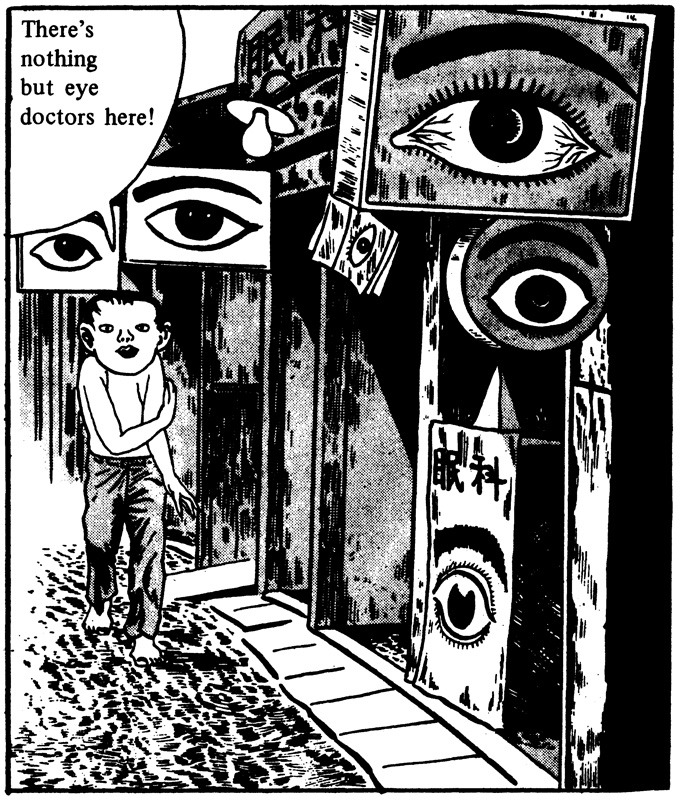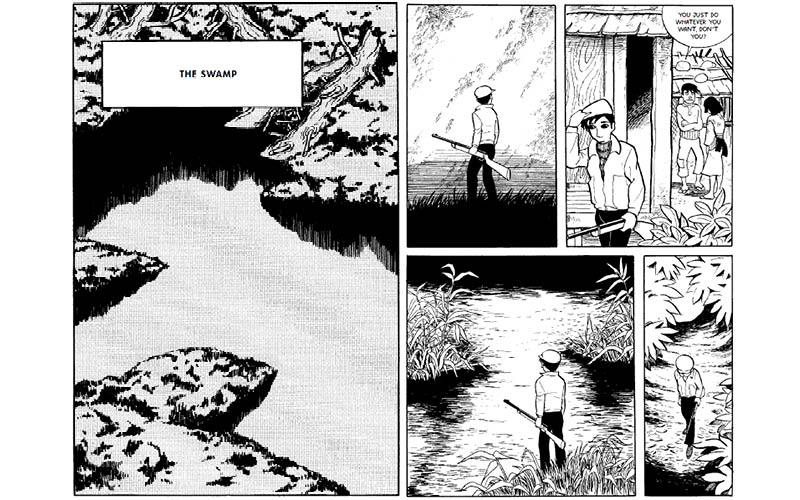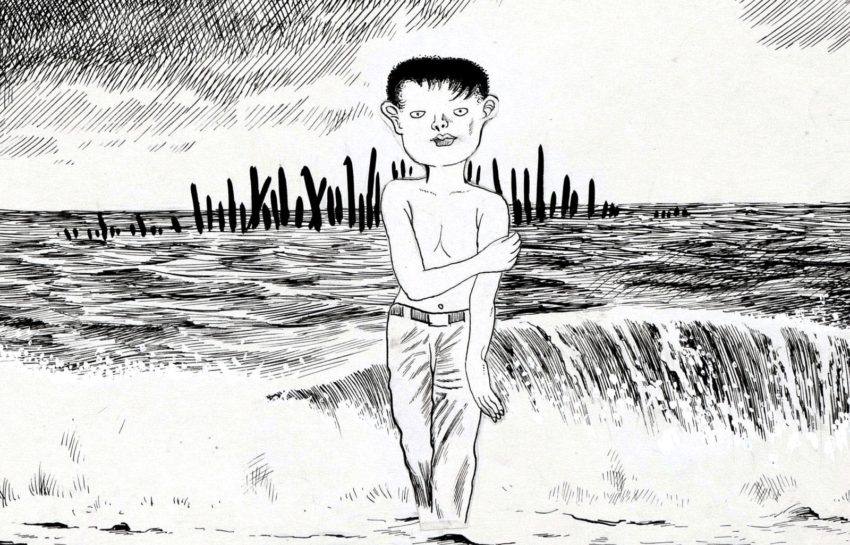Interview: Yoshiharu Tsuge
March 22, 2021 · 0 comments
By Gianni Simone.

For a very long time, and with just a few exceptions, foreign comic fans could only read Yoshiharu Tsuge’s stories in Japanese. The avant-garde artist, whose work became increasingly surreal and/or autobiographical in the heyday of arthouse manga, was often mentioned in manga histories, but rarely appreciated. However, English translations are finally coming out, published Drawn & Quarterly, covering Tsuge’s complete works between 1965 and 1987. It took about ten years to convince Tsuge to give his approval to these translations.
The 83-year-old artist is considered an eccentric genius, both because of his eventful life and the nature of his work. Having penned his final manga more than thirty years ago, Tsuge has tried to “disappear” from public scrutiny, refusing most contacts with the and only keeping in touch with a small circle of close friends. I was extremely lucky to meet him in Chofu, where he lives, for this exclusive interview. I would like to thank editor Mitsuhiro Asakawa for his indispensable help in arranging our meeting.
You have lived in Chofu for a long time, on and off. What kind of place is it?

Tsuge: When I first moved here, around 1966, it was pretty much like a country village. Until then I had lived in central Tokyo, so I was very surprised. I mean, people still used horse-drawn carriages to carry things around. Coming from a gritty inner-city environment, I was actually quite pleased by what I found – a quiet place, with few people around… It was the right place for me.
So I guess you don’t like it that much now?
T: Well, it’s completely different. It’s very convenient, of course, with many shops and all, but it’s a little too crowded and noisy for my tastes, especially around the station.
You first moved to Chofu to work at Mizuki Pro [Shigeru Mizuki’s studio], didn’t you? How was it working for Mizuki-san?
T: Many people don’t know this because at the time Mizuki was already famous, but I actually started working with comics two or three years earlier than him, so there wasn’t really anything he could teach me. When I joined him, he already had a number of young assistants at the studio. They were good enough to draw the backgrounds but he needed someone with more ability and experience to draw the characters, so he called me. Because you see, Mizuki wasn’t very good at drawing people, particularly women!
Your female characters are certainly very cute. One of my favorites is the young fashion designer who stars in “Umibe no jokei” (Beach Scene).
T: To tell you all the truth, apart from Kitaro [hit manga GeGeGe no Kitaro’s protagonist], I drew all the characters.

Did you hang out together outside the studio?
T: No, not really. He was quite older than me, so we didn’t really have anything in common. No common interests or conversation topics, nothing. Even at the studio, he was all about work. He was pretty much the quiet type.
At long last your works have been translated in both French and English. It was quite a long wait, though.
T: You wonder why it took so long?… It’s hard to explain… For a long time, I tried to escape other people’s attention. I’ve never liked to be put under the spotlight. I only wanted to lead a quiet life. In Japan we say, ite inai, which means living on the margins, not really being engaged with society, trying to be almost invisible if you like.
The translations will both cover the years between 1965 and 1987. When comparing your works from different decades, your approach to both style and content has changed quite a bit through the years.
T: The big turn in my career was made possible by Garo magazine because I was given free rein to draw whatever I wanted, any way I wanted. Up to that time, the kashihon [rental library] manga I worked for catered to the readers’ tastes, and most of those readers were young kids. So I had to follow certain guidelines. That’s why nearly all my works from the 1950s are genre comics. It was quite frustrating and I was never totally satisfied with the comics I drew at the time. But at Garo I was suddenly free to pursue my vision. That’s how “Numa” (Swamp) was born. Thanks to that story, people began to take notice.
How was the process through which you created your stories?
T: Wow, what a question (laughs). My aim, whenever I was given the chance, was to take the distance from traditional storytelling. You could say I wasn’t interested in what we call the ‘plot.’ When drawing for children, I was always told to tell easy-to-understand stories. Go easy, be clear, that’s what the publisher always said.

Your comics seem to exist outside history. In the 1960s, for instance, a war was raging in the streets of Tokyo and all over Japan, but one would be hard pressed to find any mention of them.
T: You are right, I had no interest whatsoever in social issues. I was always looking inward. I had no time for the student demonstrations and the New Left. I didn’t even know what was happening out there.
You always like to repeat that you consider yourself a craftsman more than an artist. Why is that?
T: It’s difficult to explain… To me, drawing comics was just like any other job. At the end of the day, to me drawing is a craft. When I think about what I did, more than an artist waiting for inspiration, I see myself as someone who did a sort of manual job. Drawing comics, after all, is something you do over and over again, spending hours and days on a story, and you get better with practice. Just like a craftsman. That’s what I did particularly in the 1950s that is before I got to draw more arty stuff.
I guess you don’t travel a lot these days?
T: No, I lack the physical strength to do it. Nowadays, my movements are limited to cycling around the neighborhood from one shop to the next in search of good deals. I’m like a housewife. I already have my hands full just doing the laundry, shopping for groceries and cooking three meals a day. I hardly have the time to listen to music, watch a movie or read a book like I used to do. On the other hand, I sleep a lot. They say a six-hour sleep is enough at my age, but I spend as much as 12 hours in bed. That’s my life these days. But it’s not that bad.
The manga of Yoshiharu Tsuge are released in English by Drawn & Quarterly.
Leave a Reply